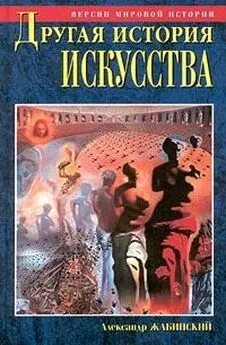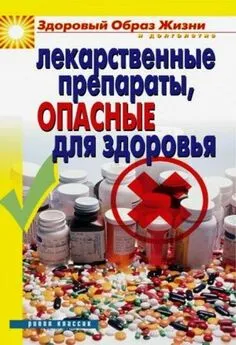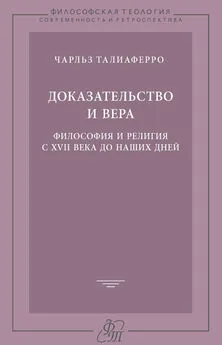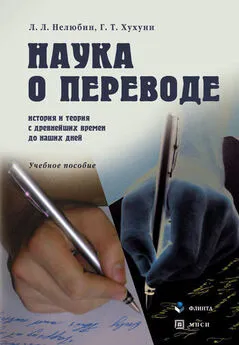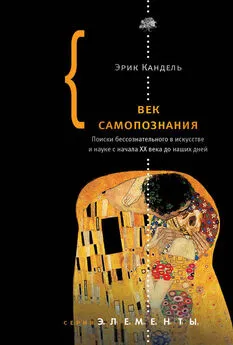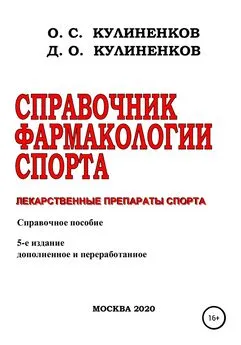Элеанор Херман - Элегантная наука о ядах от средневековья до наших дней [Как лекарственные препараты, косметика и еда служили методом изощренной расправы]
- Название:Элегантная наука о ядах от средневековья до наших дней [Как лекарственные препараты, косметика и еда служили методом изощренной расправы]
- Автор:
- Жанр:
- Издательство:Эксмо
- Год:2020
- Город:Москва
- ISBN:978-5-04-108685-5
- Рейтинг:
- Избранное:Добавить в избранное
-
Отзывы:
-
Ваша оценка:
Элеанор Херман - Элегантная наука о ядах от средневековья до наших дней [Как лекарственные препараты, косметика и еда служили методом изощренной расправы] краткое содержание
По иронии судьбы короли и королевы, так тщательно оборонявшиеся от ядов, ежедневно и бессознательно травили себя собственноручно – косметика на основе свинца и ртути, крем для кожи с мышьяком, напитки на основе свинцовых опилок и ртутные клизмы были совершенно привычными спутниками королевских особ.
В своей книге Элеанор Херман сочетает многолетние уникальные изыскания в медицинских архивах и передовые достижения судебно-медицинской экспертизы для того, чтобы рассказать правдивую историю блистательных и роскошных дворцов Европы: антисанитария, убивающая косметика, ядовитые лекарства и вездесущие экскременты.
Элегантная наука о ядах от средневековья до наших дней [Как лекарственные препараты, косметика и еда служили методом изощренной расправы] - читать онлайн бесплатно ознакомительный отрывок
Интервал:
Закладка:
Библиография
• Al-'Ubaydi, Mohammed. Khattab (1969–2002). Westpoint: Combatting Terrorism Center at West Point. Без даты.
• Allen, A. M. A History of Verona. New York: Putman, 1910.
• Ball, Philip. The Devil's Doctor, Paracelsus and the World of Renaissance Magic and Science. New York: Farrar, Straus and Giroux, 2006.
• Bevan, Bryan. Charles II's Minette. London: Ascent Books, 1979. Boorde, Andrew. Dyetary ofHelth. London: Robert Wyer, 1542.
• Borman, Tracy. The Private Lives of the Tudors, Uncovering the Secrets of Britain's Greatest Dynasty. London: Hodder and Stoughton, 2016.
• Bowsky, William M. Henry VII in Italy. Lincoln, Nebraska: University of Nebraska Press, 1960.
• Brantome, Seigneur de Pierre de Bourdeille. Illustrious Dames of the Court of the Valois Kings. New York: The Lamb Publishing Co., 1912.
• Brown, Horatio E, editor. Calendar of State Papers Relating to English Affairs. Volume XII, 1610–1613. London: Mackie & Co., 1905.
• Cartwright, Julia. Madame, a Life of Henrietta, Daughter of Charles I and Duchess of Orleans. London: Seeley and Co., Ltd., 1894.
• Casparsson, Ragnar; Ekstrom, Gunnar; and Hjortsjö, Carl-Herman. Erik XIV, Gravöppningen 1958 I Vasteras Domkyrka. Stockholm: P. A. Norstedt & Soner, 1962.
• Castiglione, Baldassare. The Book of the Courtier. New York: Charles Scribner's Sons, 1903.
• Cellini, Benvenuto. The Autobiography of Benvenuto Cellini. New York: Penguin, 1956.
• Chamberlin, E. R. The Fall of the House of Borgia. New York: Dorset Press, 1974. Chaplin, Arnold. The Illness and Death of Napoleon Bonaparte (A Medical Criticism.)
• London: Alexander Stenhouse, 1913.
• Cortese, Isabella. The Secrets of Signora Isabella Cortese. Venice: Giovanni Bariletto, 1561.
• Cornwallis, Sir Charles. The life and death of our late most incomparable and heroique prince, Henry Prince of Wales. London: John Dawson, 1641.
• Crawfurd, Raymond, MD. The Last Days of Charles II Oxford: Clarendon Press, 1909.
• Cronin, Vincent. Napoleon Bonaparte, An Intimate Biography. New York: William Morrow and Company, 1972.
• D'Orliac, Jehanne. The Lady of Beauty Agnes Sorel. Philadelphia: J. B. Lippincott Company, 1931.
• Denton, C. S. Absolute Power, The Real Lives of Europe's Most Infamous Rulers. London: Eagle Editions, 2006.
• Desclozeaux, Adrien. Gabrielle d'Estrees. London: Arthur Humphreys, 1907.
• Downing, Sarah Jane. Beauty and Cosmetics 1550–1950. Oxford: Shire Publications, 2015.
• Elyot, Sir Thomas. The Castle of Health. London: the Widow Orwin, 1539.
• Emsley, John. The Elements of Murder, A History of Poison. Oxford: Oxford University Press, 2005.
• Farmer, James Eugene. Versailles and the Court under Louis XIV. New York: The Century Company, 1905.
• Ferri, Maro and Lippi, Donatella. I Medici, La Dinastia dei Misteri. Florence, Italy: Giunti Editore, 2007.
• Fraser, Antonia. Royal Charles, Charles II and the Restoration. New York: Alfred A. Knopf. 1979.
• Freer, Martha Walker. Henri IV and Marie de Medici. London: Hurst and Blackett, 1861.
• Freer, Martha Walker. Jeanne d'Albret, Queen of Navarre. London: Hurst and Blackett, без даты.
• Funck-Brentano, Frantz. Princes and Poisoners, Studies of the Court of Louis XIV. London: Duckworth & Co., 1901.
• Gilder, Joshua and Gilder, Anne-Lee. Heavenly Intrigue, Johannes Kepler, Tycho Brahe, and the Murder Behind One of History's Greatest Scientific Discoveries. New York: Anchor Books, 2005.
• Graham-Dixon, Andrew. Caravaggio, A Life Sacred and Profane. New York: W. W. Norton & Company, 2010.
• Hibbert, Christopher. George III, A Personal History. London: Viking, 1998. Hilton, Lisa. Athenais, The Real Queen of Prance. The Life of Louis XIV's Mistress. New York: Little, Brown & Company, 2002.
• Holmes, Frederick. The Sickly Stuarts, The Medical Downfall of a Dynasty. Sparkford, UK: J. H. Haynes, 2003.
• Hutton, Ulrich von. De Morbo Gallico, A Treatise on the French Disease. London: John Clark, 1730.
• La Fayette, Marie-Madeleine Pioche de La Vergne. The Secret History of Henrietta, Princess of England, First Wife of Philippe, Duc d'Orleans. New York: E. P. Dutton and Company, 1929.
• Levy, Joel. Poison, an Illustrated History. Guilford, Connecticut: Lyons Press, 2011.
• Lewis, Paul. Lady of France, a Biography of Gabrielle d'Estrees, Mistress of Henry the Great. New York: Funk & Wagnalls, 1963.
• Macauley, Thomas. The History of England from the Time of James II. Philadelphia: Porter & Coates, 1848.
• Mackowiak, Philip A., MD. Diagnosing Giants, Solving the Medical Mysteries of Thirteen Patients who Changed the World. Oxford: Oxford University Press, 2013.
• Mackowiak, Philip A., MD. Post Mortem, Solving History's Great Medical Mysteries. Philadelphia: American College of Physicians, 2007.
• MacLeod, Catherine. The Lost Prince, The Life & Death of Henry Stuart. London: The National Portrait Gallery, 2012.
• Melograni, Piero. Wolfgang Amadeus Mozart, A Biography Chicago: University of Chicago Press, 2007.
• Moulton, Thomas. This is the Myrour or Glasse of Helth Necessary and Nedefull for Every Person to Loke In, That Wyll Kepe Theyr Body from the Syckenes of the Pestylynce. London: Hugh Jackson, 1580.
• Nada, John. Carlos the Bewitched, The Last Spanish Hapsburg. London: Jonathan Cape Ltd., 1962.
• Packard, Francis R. Life and Times of Ambroise Pare. New York: Paul B. Hoeber, 1921.
• Paliotti, Guido. La Morte dArrigo VII di Lussemburgo. Montepulciano, Italy: Tipografia Unione Cooperative, 1894.
• Pare, Ambroise. The Workes of that famous Chirurgion Ambrose Parey Translated out of Latine and compared with the French. London: Richard Cotes and R. Young, 1649.
• Payne, Francis Loring, The Story of Versailles. New York: Moffat, Yard & Co., 1919.
• Pemell, Robert. A Treatise on the Diseases of Children; with their Causes, Signs, Prognosticks, and Cures, for the benefit of such as do not understand the Latine Tongue, and very useful for all such as are House-keepers and have Children. London: J. Legatt, 1653.
• Prescott, Orville. Lords of Italy. New York: Harper and Row, 1932.
• Roberts, Michael. The Early Vasas, A History of Sweden 1523–1611. Cambridge: Cambridge University Press, 1968.
• Roelker, Nancy Lyman. Queen of Navarre, Jeanne d'Albret 1528–1572. Cambridge, Massachusetts: Harvard University Press, 1968.
• Ruscelli, Girolamo. The secrets of the reverend Maister Alexis of Piemont: containing excellent remedies against diverse diseases, wounds, and other accidents, with the maner to make distillations, parfumes, confitures, dying, colours, fusions, and meltings. London: Thomas Wright, 1595.
• Scully, Terence. The Art of Cookery in the Middle Ages. Berlin: Воуеб, 2005.
• Skidmore, Chris. Edward VI, The Lost King of England. New York: St. Martin's Press, 2007.
• Somerset, Anne. Ladies-in-Waiting from the Tudors to the Present Day. London: Weidenfeld & Nicolson, 1984.
• Somerset, Anne. Unnatural Murder, Poison at the Court of James I. London: Orion Books, 1997.
• Spangenberg, Hans. Cangrande delta Scala. Berlin: R. Gaertners Verlagsbuchhandlung, 1892.
• Stanley, Arthur Penrhyn. Historic Memorials of Westminster Abbey. London: John Murray, 1886.
• Steegmann, Mary G. Bianca Cappello. Baltimore: Norman, Remington and Company, 1913.
• Sugg, Richard. Mummies, Cannibals and Vampires, The History of Corpse Medicine from the Renaissance to the Victorians. Routledge: New York, 2011.
• Sully, Maximilian de Bethune, duke of. Memoirs of Maximilian de Bethune, Duke of Sully, Prime Minister to Henry the Great. Edinburgh: A. Donaldson, 1770.
• Tracey, Larissa, editor. Medieval and Early Modern Murder. Cambridge: D. S. Brewer, 2018.
• Troyat, Henri. Ivan the Terrible. New York: Berkley Books, 1982.
• Warner, the Reverend Richard. Antiquitates Culinariae, or Curious Tracts Relating to the Culinary Affairs of the Old English. London: Robert Blamire, 1791.
• Weider, Ben, and Hapgood, David. The Murder of Napoleon. New York: Congdon & Lattes, Inc., 1982.
• Wheeler, Jo. Renaissance Secrets: Recipes & Formulas. London: V & A Publishing, 2009.
• Whorton, James С The Arsenic Century, How Victorian Britain was Poisoned at Home, Work & Play. Oxford: Oxford University Press, 2010.
• Williams, Robert С. The Forensic Historian, Using Science to Reexamine the Past. New York: M. E. Sharpe, Inc. 2013.
• Woolly, Hannah. The Accomplished lady's delight in preserving, physic, beautifying, and cookery. London: B. Harris, 1675.
• Ziegler, Gilette. At the Court of Versailles, Eyewitness Reports from the Reign of Louis XIV. New York: Dutton, 1966.
• Apostoli, Pietro, et al. "Multielemental Analysis of Tissues from Cangrande della Scala, Prince of Verona, in the 14th Century" in Journal of Analytical Toxicology, Vol, 33, pp. 322–327, July/August 2009.
• Barker, Sheilah. "The Art of Poison: The Medici Archives" in The Florentine: Vol. 85/2008.
• Baron, Jeremy Hugh. "Paintress, princess and physician's paramour: poison or perforation?" in Journal of the Royal Society of Medicine, Volume 91, pp. 213–216 April 1998.
• Bloch, Harry, MD. "Poisons and Poisoning: Implication of Physicians with Man and Nations" in Journal of the National Medical Association, Vol. 79(7), pp. 761–764, July 1987.
• Charlier, Philippe. "Autopsie des Restes de Diane de Poitiers" in La Revue du Practicien, Vol. 60, pp. 290–293, 2010.
• Charlier, Philippe., et al. "The Embalming of John of Lancaster, first Duke of Bedford (1435 A.D.): A Forensic Analysis" in Medicine, Science and the Law, Vol. 56(2) pp. 107–115,2016.
• Charlier, Philippe, et al. "Fatal alchemy. Did gold kill a 16th century French courtesan and favourite of Henri II?" in BMJ, pp. 1402–1403, December 19–26, 2009.
• Charlier, Philippe. "Levolution des Procedures d'embaumement aristocratique en France medievale et moderne (Agnes Sorel, Le Due de Berry, Louis XI, Charlotte de Savoie, Louis XII, Louis XIV et Louis XVIII) in Medicina Nei Secoli Arte e Scienza, 18/3, pp. 777–798, 2006.
• Charlier, Philippe. "Qui a tue la Dame de Beaute? Etude Scientifique des restes dAgnes Sorel (1422–1450)" in Histoire des Sciences Medicates, Vol. XL, no. 3, pp. 255–266, 2006.
• Charlier, Philippe. "Vie et mort de la Dame de Beaute, letude medicale des restes dAgnes Sorel" in La Revue du Practicien, Vol. 55, pp. 1734–1737, 2005.
• Derbyshire, David. "Mercury Poisoned Ivan the Terrible's Mother and Wife" in The Telegraph, March 14, 2001.
• Cillier, L and E P. Retief. "Poisons, Poisoning and the Drag Trade in Ancient Rome" in Akroterion Vol. 45, pp. 88-100, 2000.
Читать дальшеИнтервал:
Закладка:
![Обложка книги Элеанор Херман - Элегантная наука о ядах от средневековья до наших дней [Как лекарственные препараты, косметика и еда служили методом изощренной расправы]](/books/1062247/eleanor-herman-elegantnaya-nauka-o-yadah-ot-sredneve.webp)
